
If you’ve ever taken a sip of water from your metal water bottle and noticed a strange, metallic taste1, you're not alone. Many people experience this when using stainless steel or aluminum water bottles. But what causes that metallic taste, and is it harmful to drink? In this article, we’ll explore the reasons behind the metallic taste in your water bottle and how to deal with it.
A metallic taste in your water bottle is often caused by the materials in the bottle itself or how the bottle has been used.
Let's dive into the details of what causes the metallic taste and how to eliminate it.
Why Does My Water Bottle Taste Metallic?
There are several reasons why your water bottle may taste metallic, especially if it’s made from stainless steel or aluminum. The most common causes are:
- Material Interaction: Some metals, particularly lower-quality stainless steel or aluminum, can interact with the water and leach small amounts of metal into it. This often causes a metallic aftertaste.
- Water Quality2: Hard water, which contains high levels of minerals like calcium and magnesium, can react with metal bottles and contribute to a metallic taste.
- Lack of Proper Cleaning: If your water bottle isn’t cleaned regularly, bacteria and mineral buildup can create a bad taste, which may be mistaken for metallic.
- New Bottles: New stainless steel or aluminum bottles often have a coating or residue left from manufacturing that can lead to a metallic taste in the water.
The metallic taste typically comes from the interaction between water and the bottle's material or contamination.
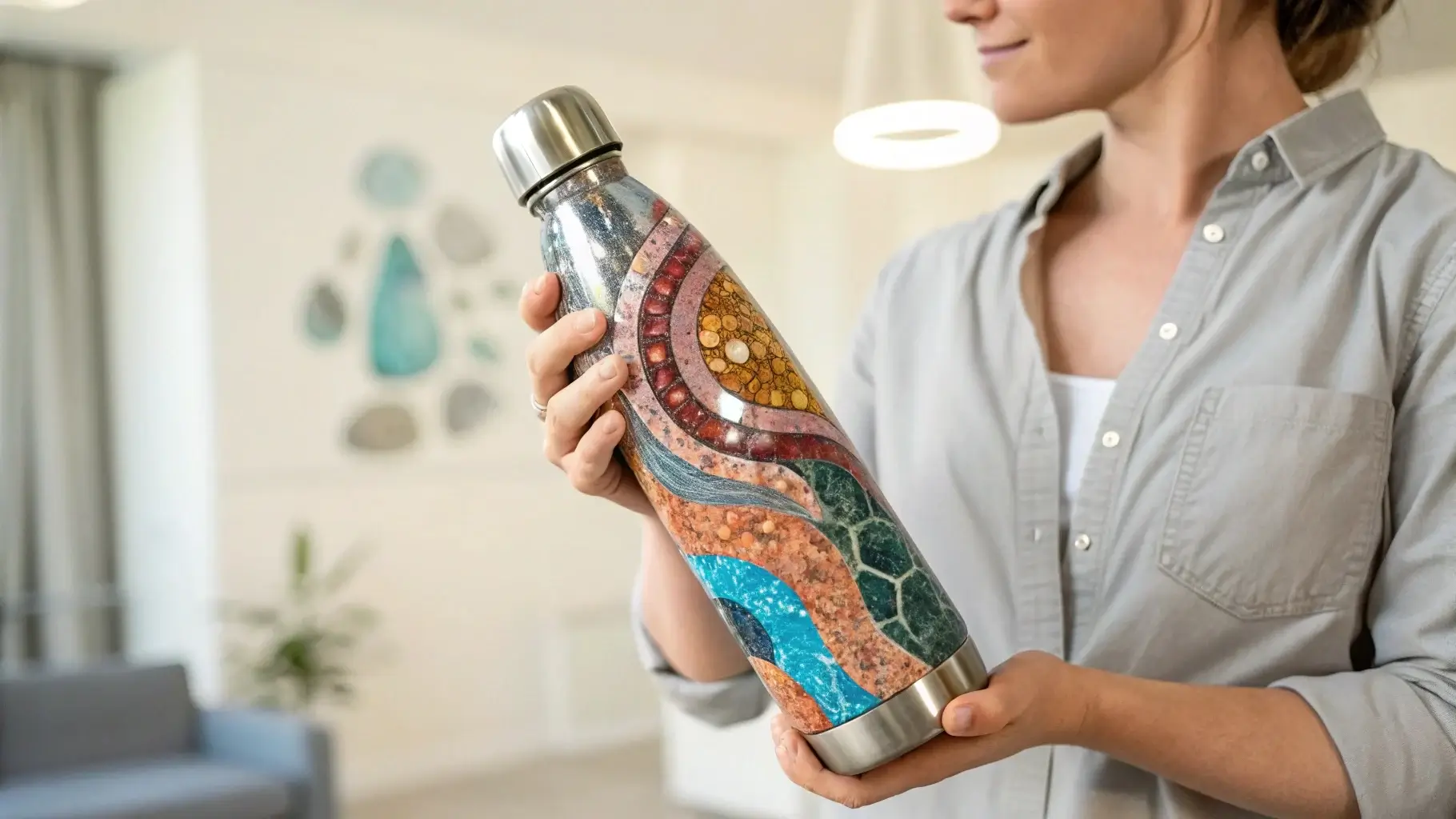
How Water Affects Metal Bottles
Water, particularly hard water, can have high mineral content, and when it comes into contact with metals, it can cause a reaction. For instance, the natural properties of water can cause small amounts of metal ions to be released from the container into the water, giving it that metallic taste. This is more common in cheaper or poorly finished bottles.
Is It Safe to Drink Metallic Tasting Water?
Drinking water that tastes metallic3 is generally safe, but there are some considerations to keep in mind. The metallic taste typically isn’t harmful, but if it persists, it could be a sign of contamination or that the bottle is not made of high-quality materials.
If you notice a metallic taste, check the bottle’s quality, and clean it properly before using it again.
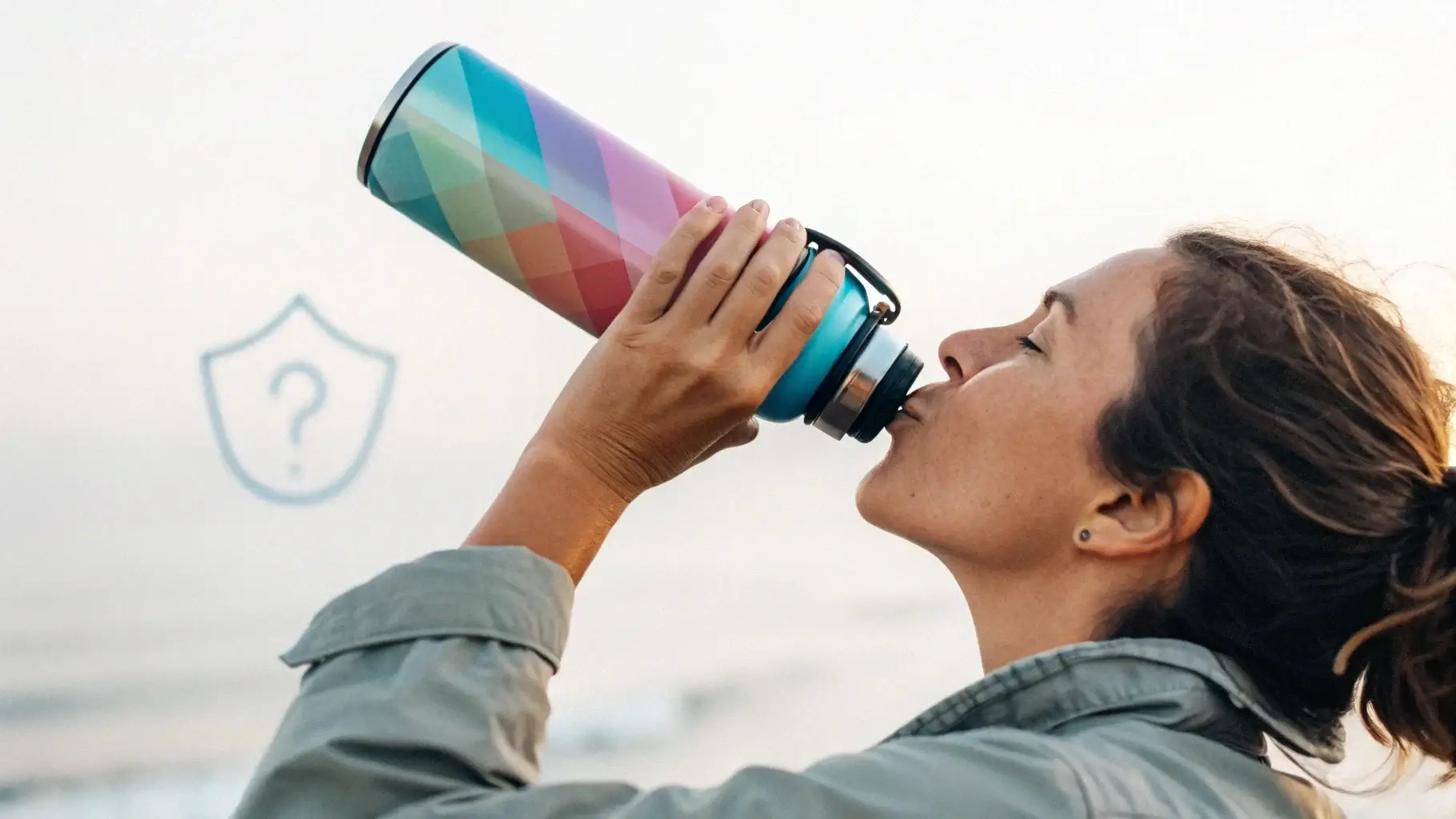
Factors That Can Influence Safety
- Quality of Metal4: High-quality stainless steel and aluminum water bottles are less likely to leach harmful substances into the water. However, poor quality metals or bottles with coatings may introduce unwanted materials.
- Water Contaminants: If your water source is contaminated with heavy metals or other chemicals, it could contribute to the metallic taste in your bottle. Be sure your water is filtered and free from harmful substances.
Are Metallic Water Bottles Safe?
Metallic water bottles, including stainless steel and aluminum, are generally safe to use, provided they are made with high-quality materials. Stainless steel is a non-reactive material, meaning it doesn’t typically leach harmful substances into the water. However, cheaper bottles or those with coatings can sometimes contribute to a metallic taste.
Stainless steel water bottles are safe as long as they are made from food-grade, non-reactive materials5.

Tips for Choosing a Safe Water Bottle
- Opt for Food-Grade Stainless Steel: Look for bottles that are labeled as food-grade stainless steel (e.g., 18/8 stainless steel). These materials are non-reactive and do not leach harmful substances.
- Avoid Bottles with Coatings: Bottles with coatings or paints may peel or wear down over time, contributing to a metallic taste or even chemical leaching.
- Check for Certifications6: Ensure that the bottle has certifications for safety and quality standards, such as FDA approval or BPA-free labels.
Does Stainless Steel Leave a Metallic Taste?
Stainless steel bottles, when properly made, should not leave a metallic taste in your water. However, cheaper or poorly manufactured stainless steel may contain impurities or lower-quality materials that can cause a metallic flavor. Additionally, new bottles often have a protective coating or residue that can cause the taste until cleaned thoroughly.
Stainless steel itself is not typically the cause of the metallic taste—it's usually due to impurities or residues from manufacturing.
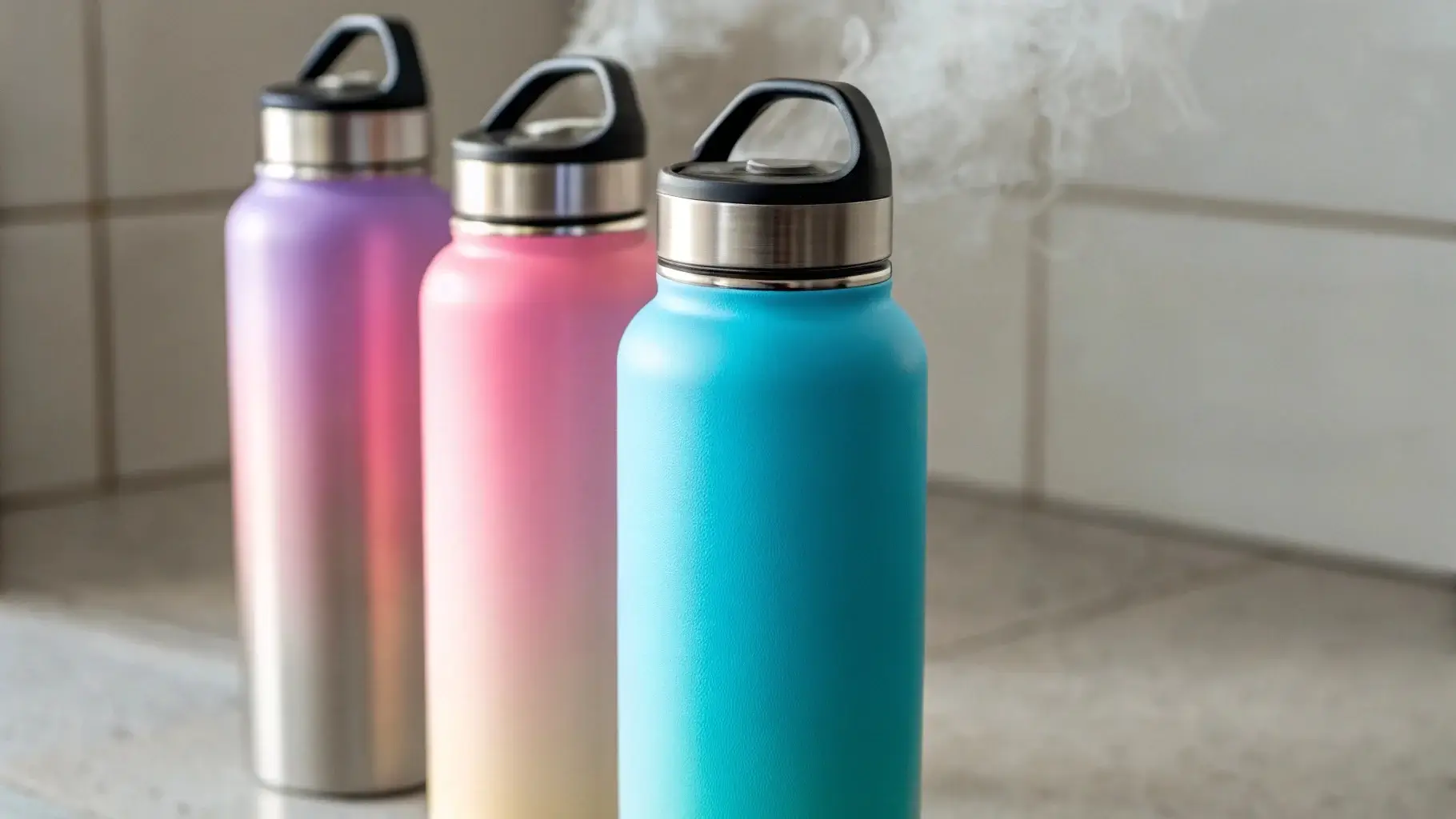
What to Do If Your Stainless Steel Bottle Tastes Metallic
- Wash it well: If your stainless steel bottle is new, wash it thoroughly with hot water and soap before use. This will help remove any residue or coating that may be causing the taste.
- Use Vinegar or Baking Soda: If the metallic taste persists, try soaking your bottle in a mixture of vinegar and water or a baking soda solution. Both can help remove odors and tastes that are absorbed into the bottle’s material.
- Check for Damage: If your bottle is scratched or damaged, it may have internal coating wear, which can lead to metallic taste. Consider replacing it if this is the case.
How to Get Rid of Metallic Taste in Hydroflask?
If you notice a metallic taste in your Hydroflask or any other high-quality stainless steel water bottle, here are a few ways to remove it:
- Wash the Bottle: Sometimes, a thorough cleaning with soap and hot water will do the trick. This removes any residual manufacturing coatings that might cause the taste.
- Use Baking Soda: Fill the bottle with a mixture of water and baking soda, let it sit for several hours, and rinse thoroughly.
- Use Vinegar: Soak the bottle in a solution of white vinegar and water to neutralize the taste.
Hydroflask bottles, like other high-quality stainless steel bottles, can be cleaned with vinegar or baking soda to remove metallic tastes.
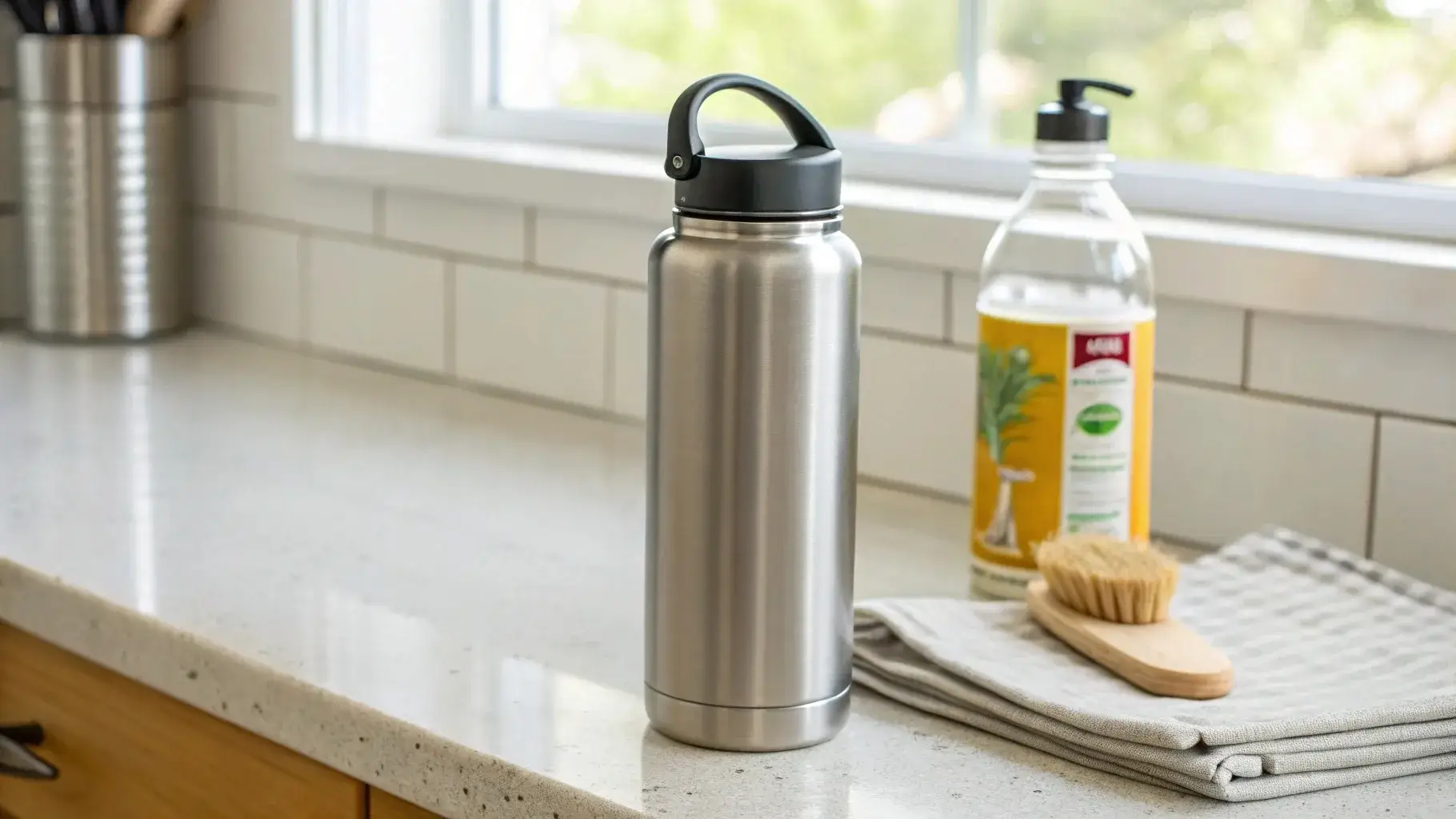
Why Does This Work?
Both baking soda and vinegar have natural deodorizing properties, which help neutralize unwanted tastes and odors. Additionally, vinegar’s acidity helps dissolve any residue inside the bottle that might be contributing to the taste.
Conclusion
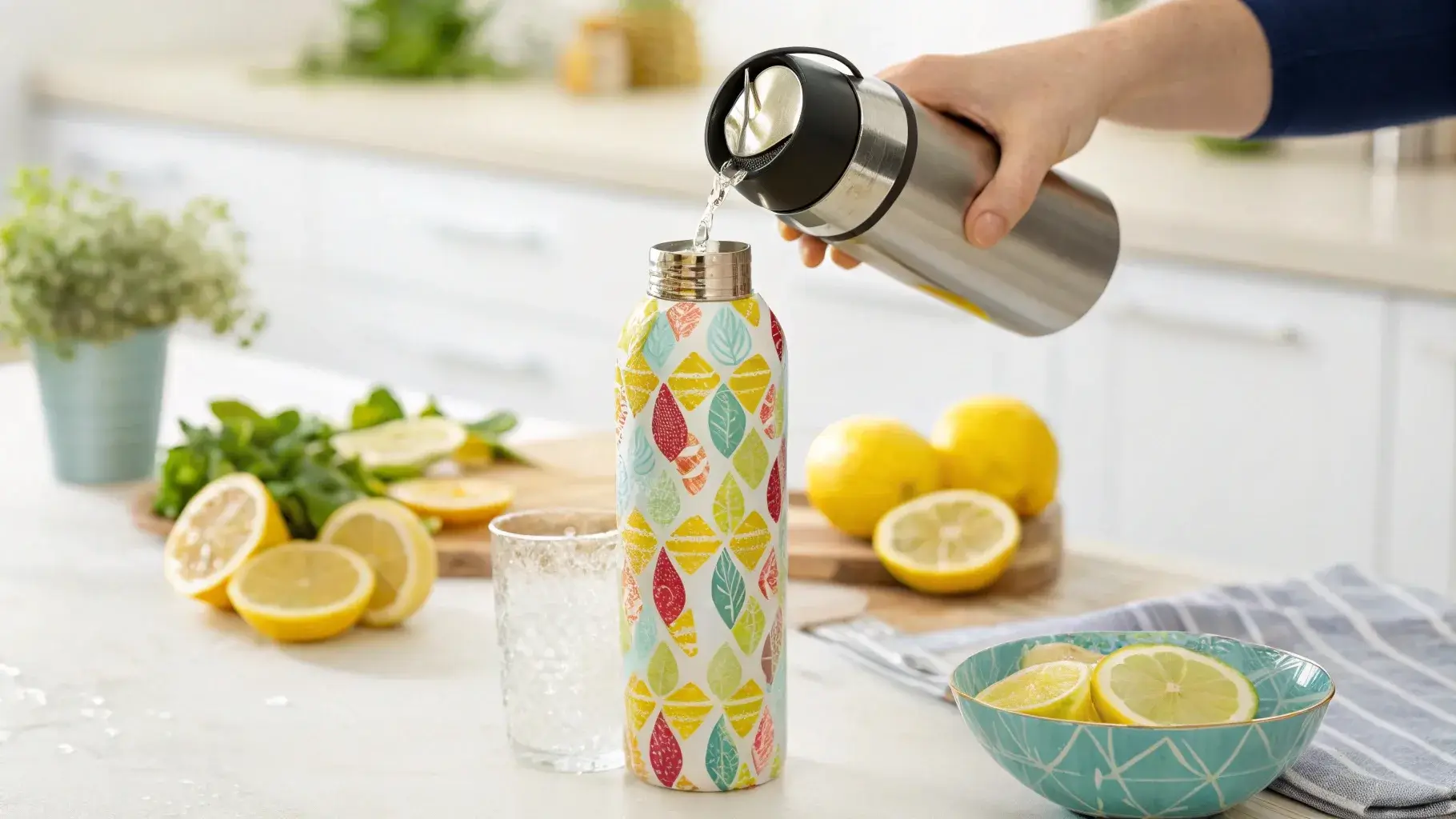
In conclusion, a metallic taste in your water bottle is usually caused by the material of the bottle, water quality, or insufficient cleaning. Stainless steel bottles, when made from high-quality materials, should not leave a metallic taste. If you experience this issue, cleaning your bottle with solutions like baking soda, vinegar, or lemon can help. Remember to always opt for high-quality, food-grade bottles to avoid metallic taste and ensure safety.
-
understand why water sometimes tastes metallic and if it's linked to health concerns. ↩
-
how minerals in water can influence taste and when to test your water. ↩
-
Reassurance and safety guidelines if you notice metallic taste in your water. ↩
-
Discover how to choose safe, non-reactive materials for reusable water bottles. ↩
-
Explains food-grade stainless steel and why it's preferred for water safety. ↩
-
Identify official certifications like NSF, FDA approval, or BPA-free, ensuring they buy safe bottles. ↩

